
CANON PIXMA Pro 9000 and Mark II: Install a Ink System with Empty Tanks.
- By BCH Technologies
- On Aug 15, 2018
- Comment 0
Today we are going to install a continuous ink system (CIS) on a Canon Pro 9000 printer. We are going to start with an empty CIS, fill it up with ink, and then try different ways of wiring tubes.
Click the "play" button for the YouTube Video
Steps
Let's start with some basics about this printer. The lid trigger is on the right-hand side. If you insert a piece of paper into the opening, the printer will think its lid is closed (Picture 1).
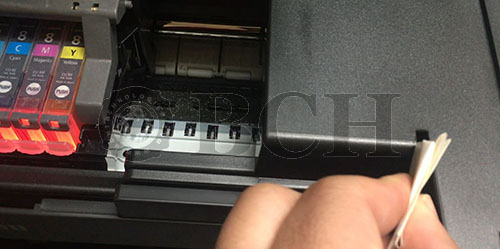
Picture 1. Door Trigger
After opening the door and removing cartridges, you can see the three essential parts (Picture 2):
(1) brass pins for reading chips
(2) ink intake
(3) a lever to pull up and remove the printhead
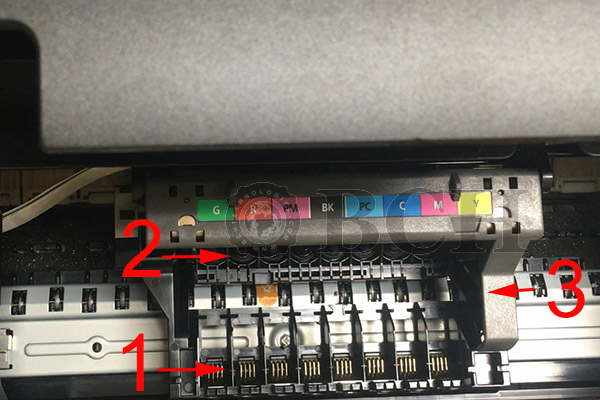
Picture 2. Three essential parts of the printhead.
Step 1. Install Washer
The first step is to install a silicone washer on each ink intake. It helps the cartridge have a tighter seal and reduces air bubbles (Picture 3).

Picture 3. Install Washer
Step 2. Fill up the Cartridge
After we remove plugs from all eight tanks, we are going to fill the cartridges one by one. We will fill up a tank first, then find a corresponding cartridge and partially lift the orange clip (Picture 4). We will use the left hand to hold the cartridge and lift the ink tank with the right hand. Now, we look like the Statue of Liberty so the ink can flow into the cartridge (Picture 5). Once the cartridge is full, we will re-attach the clip. Now we will put both the larger and the smaller ends of the plug back.
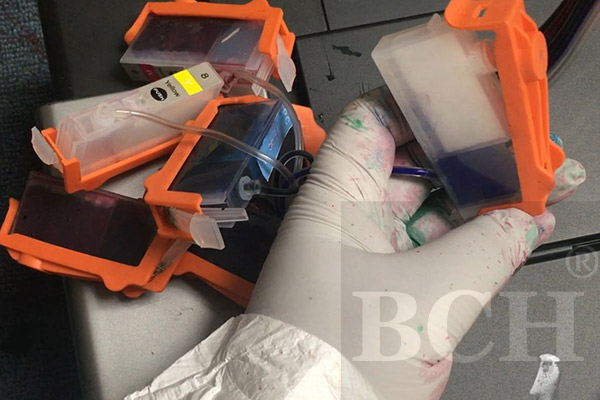
Picture 4. Fill up the Cartridge.
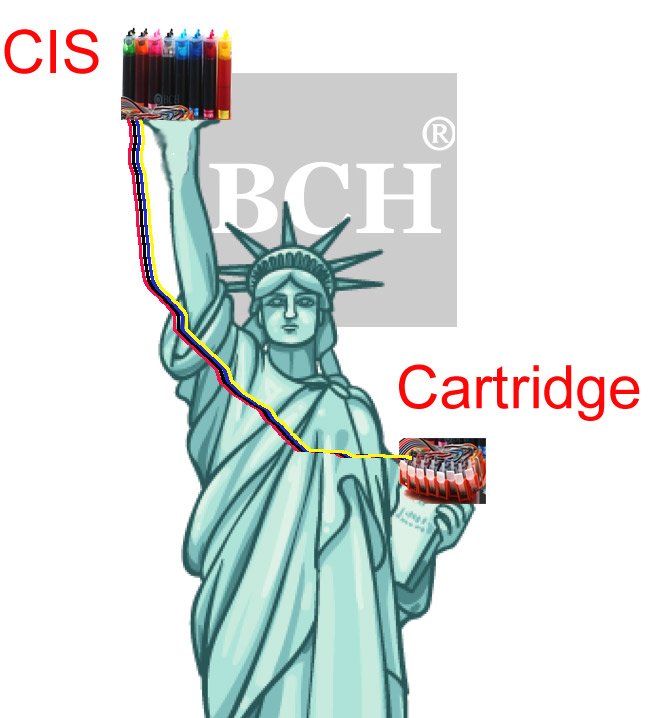
Picture 5. Holding the CIS up.
Step 4. Prime
We will next hold the tanks with larger chambers facing us, flipping them toward us. Ink will flow from the smaller chamber to the bigger one. A healthy tank should have a lower ink level in the small chamber than in the big one. Also, the tank should be set at a level so that the printhead is between the two ink levels. (Picture 5. Priming tanks) Now, we can position the tank to a correct level. We must not place the tank on top of the printer.

Picture 5. Thank Prime.
Step 5. Install the Cartridge
Install the cartridges into the printer. A cartridge lights up when the printer detects a functional chip. Now, it is time to remove the small ends of the plugs and install the air filters. (Picture 5)
Step 6. Wiring the Tubes
There are many ways to wire the supply tubes. We will try two mounting accessories. We can use the wire clip to mount it on the lid ceiling. A
T-Arm Support clip can also be used. The mounting spot should be near the center of the printer, with just enough tubes to reach both sides of the printer. We must not make the tube too long. Otherwise, it will be caught when the printhead is moving. If we need more mounting supplies, we can find them at www.bchtechnologies.com. Additionally, we can just keep the lid open. (Picture 6)
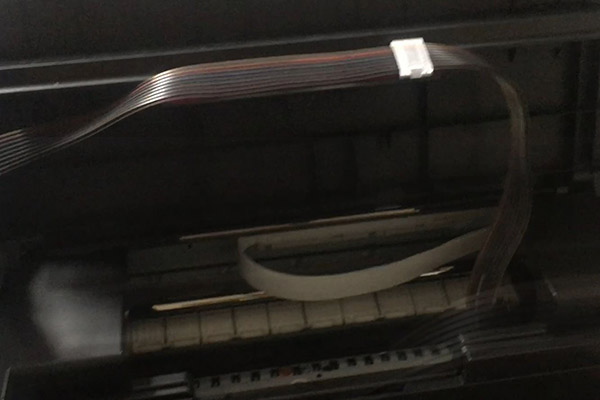
Picture 6. Open-lid wirin
We also removed a piece of plastic to be able to close the lid without snapping the tubes.
Using another idea, we glued a piece of plastic to the printer, and the plastic sticks out of the printer’s edge by 4 inches. This method will work well for this printer. We may want to try a few different options to find the best solution
Step 7. Reset the Ink Level
Soon we will print enough pages for the printer to display the "Ink has run out" error. We must not close this window. When we open and close the lid, the ink level will be reset to full.
A Few Tips
If the ink level is not reset, we can find the cartridge with a flashing light. Afterward, we can take the cartridge out and put it back to reset the ink level
Furthermore, we can change the black ink into pigment ink to make it waterproof. We can keep the others to serve as dye ink. We can also try pigment ink on cyan and magenta, but they will often clog.
